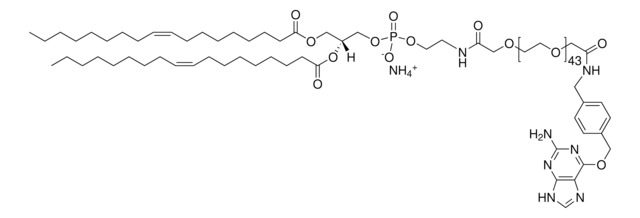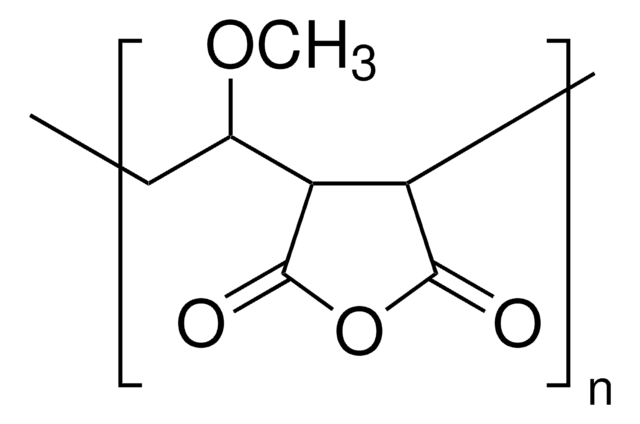890705C
Avanti
16:0-18:1 EPC (Cl Salt)
Avanti Research™ - A Croda Brand 890705C
Sinônimo(s):
1-palmitoyl-2-oleoyl-sn-glycero-3-ethylphosphocholine (chloride salt)
About This Item
Produtos recomendados
Formulário
liquid
embalagem
pkg of 1 × 1 mL (890705C-10mg)
pkg of 1 × 2.5 mL (890705C-25mg)
fabricante/nome comercial
Avanti Research™ - A Croda Brand 890705C
concentração
10 mg/mL (890705C-10mg)
10 mg/mL (890705C-25mg)
tipo de lipídio
transfection
cationic lipids
Condições de expedição
dry ice
temperatura de armazenamento
−20°C
cadeia de caracteres SMILES
O=P(OCC[N+](C)(C)C)(OC[C@]([H])(OC(CCCCCCC/C=C\CCCCCCCC)=O)COC(CCCCCCCCCCCCCCC)=O)OCC.[Cl-]
chave InChI
SXRDCCSKGWBZFF-ISBKSCLYSA-M
Descrição geral
Aplicação
- as a cationic lipid to explore the change in organization and dynamics of a membrane-bound fluorescent probe in host membranes of varying charge
- in the preparation of small unilamellar cationic liposomes
- in a novel albumin-associated lipoplex formulation to evaluate the antitumoral efficacy of immuno-gene therapy and “suicide” gene therapy
Ações bioquímicas/fisiológicas
Embalagem
Informações legais
Palavra indicadora
Danger
Frases de perigo
Declarações de precaução
Classificações de perigo
Acute Tox. 3 Inhalation - Acute Tox. 4 Oral - Aquatic Chronic 3 - Carc. 2 - Eye Irrit. 2 - Repr. 2 - Skin Irrit. 2 - STOT RE 1 - STOT SE 3
Órgãos-alvo
Central nervous system, Liver,Kidney
Classe de risco de água (WGK)
WGK 3
Escolha uma das versões mais recentes:
Certificados de análise (COA)
It looks like we've run into a problem, but you can still download Certificates of Analysis from our Documentos section.
Se precisar de ajuda, entre em contato Atendimento ao cliente
Já possui este produto?
Encontre a documentação dos produtos que você adquiriu recentemente na biblioteca de documentos.
Nossa equipe de cientistas tem experiência em todas as áreas de pesquisa, incluindo Life Sciences, ciência de materiais, síntese química, cromatografia, química analítica e muitas outras.
Entre em contato com a assistência técnica










